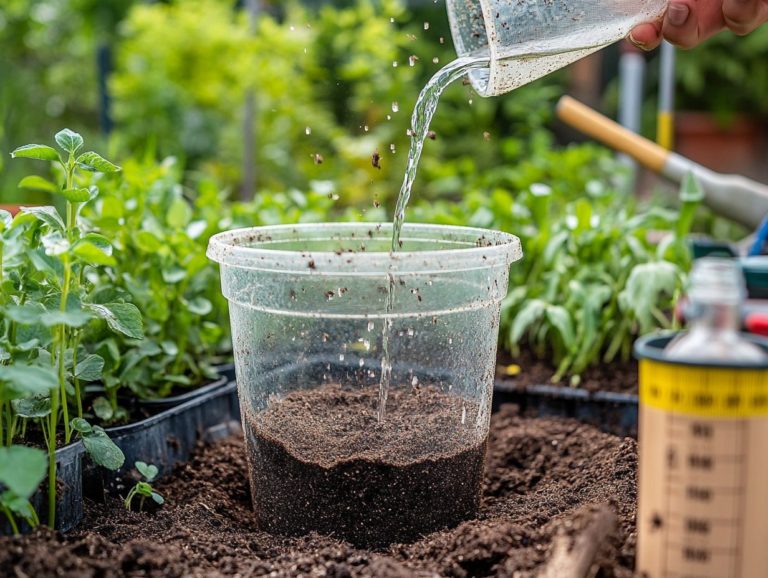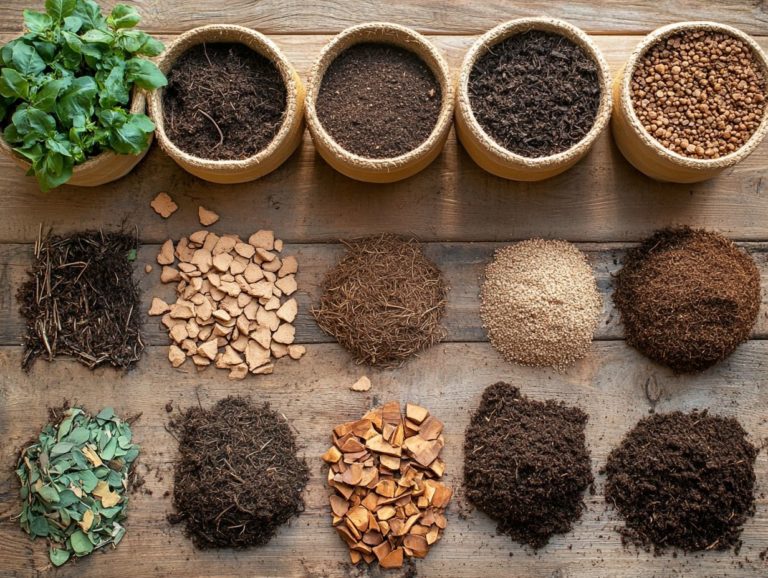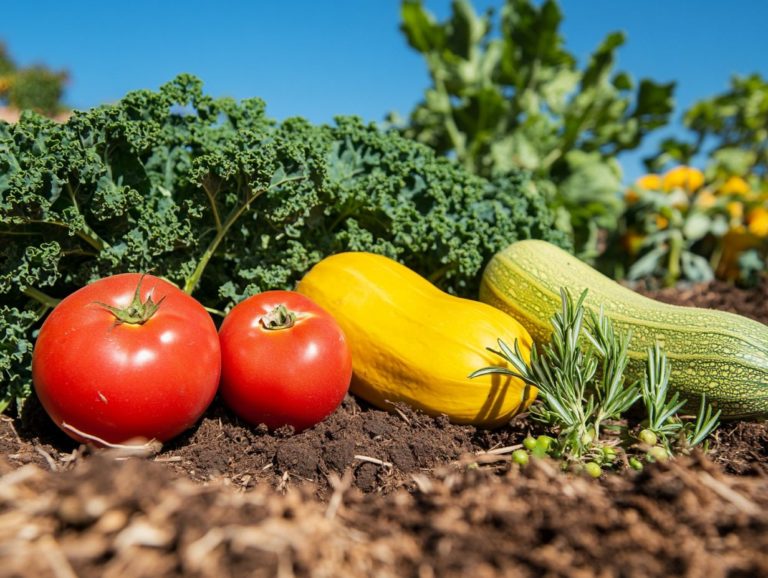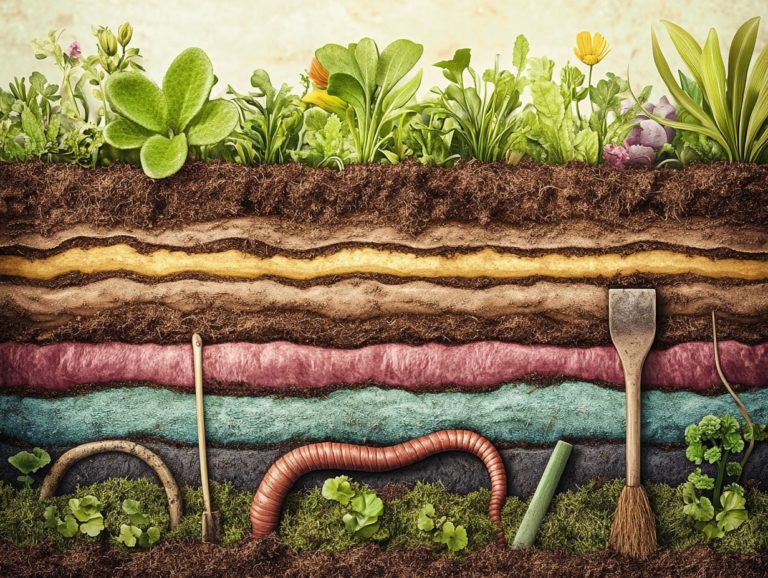The Science Behind Soil Moisture
Soil moisture is a critical yet often overlooked element of our ecosystems. It plays an essential role in plant health, agricultural productivity, and environmental balance.
Understanding the amount of water in the soil is vital for optimizing agricultural production. It directly impacts plant growth, irrigation management, and the health of your crops.
This article delves into soil moisture, starting with its definition and importance. Explore factors influencing moisture levels, like climate, soil composition, and structure.
Discover effective methods to measure moisture and its impact on plant growth. We will also discuss future soil moisture research and its promising applications, including moisture analysis and satellite technology.
Dive in now to uncover the essential science behind soil moisture and its significance in sustaining life on Earth, with a focus on water absorption and soil salinity.
Contents
Key Takeaways:
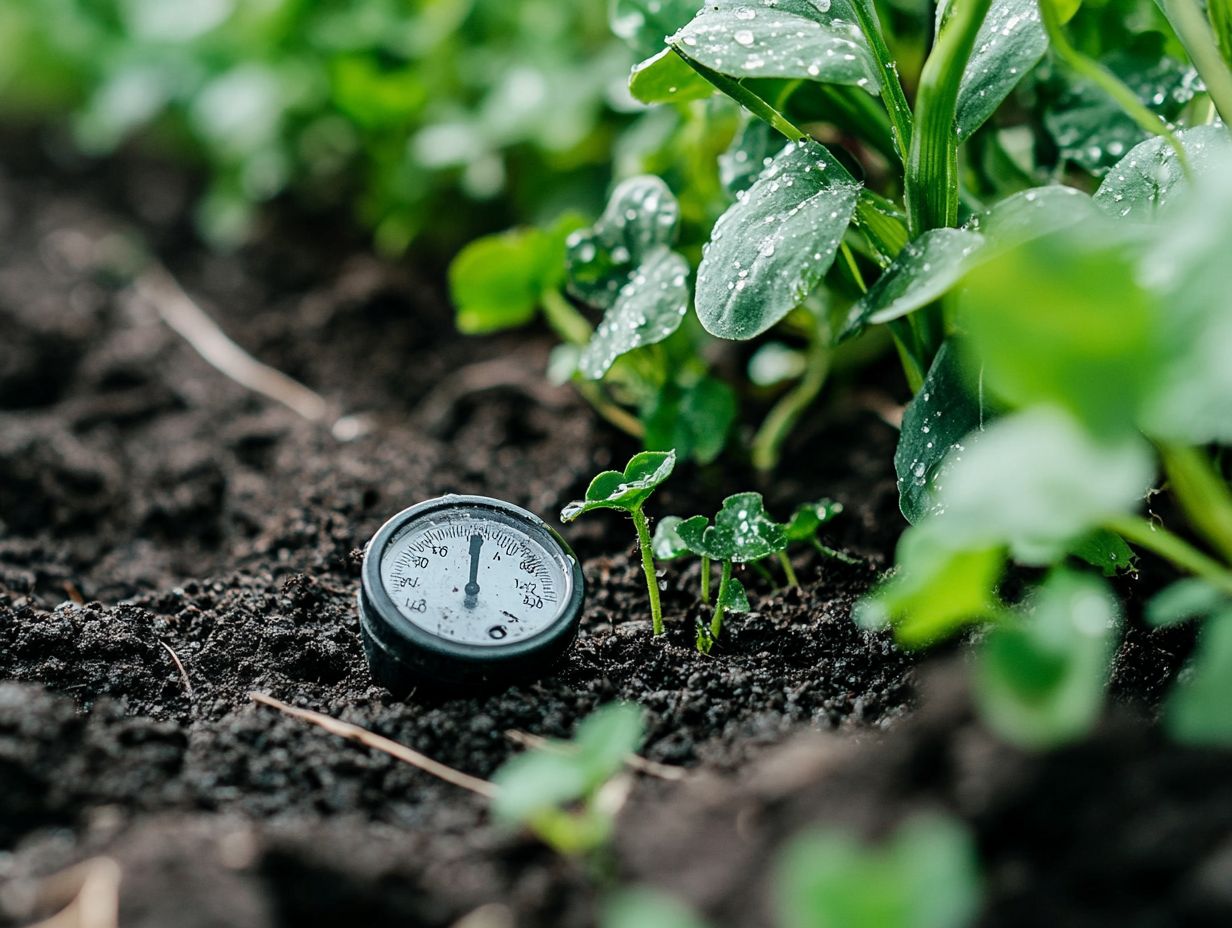
Understanding Soil Moisture
Understanding soil moisture is vital for optimizing agricultural production. It affects plant growth, irrigation management, and crop health.
Soil moisture refers to the amount of water retained in the soil. This is essential for maintaining the balance of water needed for healthy plant development, especially regarding water retention and drought forecasting.
Accurate measurement of soil moisture allows you to assess moisture levels effectively. This gives you the power to make informed decisions about irrigation scheduling and agricultural processes.
Monitoring soil moisture is increasingly important under changing weather conditions. These conditions can significantly influence moisture retention and the water balance within the soil structure.
Factors Affecting Soil Moisture
Several factors influence soil moisture levels, including climate, weather patterns, soil composition, and land management practices. The type of crops you choose can also significantly impact how well soil retains moisture.
Soil texture is crucial; coarse textures may drain quickly, while finer textures hold water longer. This significantly affects water tension and overall soil water retention.
Incorporating organic matter into your soil improves its structure. This enhances water absorption and reduces soil salinity both vital for maintaining optimal moisture levels.
Climate and Weather Patterns
Climate and weather patterns are crucial in determining soil moisture levels. They influence immediate moisture availability and long-term agricultural productivity.
Different weather conditions, from rainfall patterns to temperature thresholds, can cause significant fluctuations in soil moisture content. This impacts the water balance vital for optimal plant growth.
By effectively forecasting drought, you can anticipate water deficits and adjust your irrigation management strategies accordingly. Acting quickly can make all the difference!
Prolonged dry spells can exacerbate existing challenges and lead to reduced crop yields, highlighting the need for effective moisture sensors.
Understanding how climatic changes affect soil moisture gives you the power to implement more resilient farming practices. Use modern moisture analysis and remote sensing tools, which involve using technology to gather data from a distance.
Incorporating advanced tools like climate modeling can enhance the accuracy of drought forecasting. This enables you to make informed decisions about resource allocation during critical growing seasons, ensuring optimal moisture availability.
Integrating these forecasting techniques strengthens your farm operations and contributes to broader food security efforts in the face of changing global weather patterns.
Soil Composition and Structure
Soil composition and structure are key factors that determine how effectively soil retains and transmits moisture. They play a significant role in agricultural productivity.
Various components, including soil texture and organic matter, contribute to the unique characteristics of soil that directly influence moisture levels and overall water balance.
The dynamics between these elements are essential. For example, sandy soils provide excellent drainage but often struggle to retain moisture due to their larger particle sizes.
This directly affects soil moisture data accuracy. On the other hand, clay soils, with their finer particles, can hold considerable amounts of water but may encounter drainage issues that lead to saturation, potentially causing water stress in crops.
The density of the soil impacts pore space, which is connected to water movement and availability for crops. This influences soil moisture measurement practices.
By increasing organic matter, you enhance soil structure through improved aggregation. This promotes a vibrant ecosystem that aids in moisture conservation, reducing soil salinity.
Grasping these intricate relationships is crucial for implementing effective irrigation practices. This ensures sustainable land management through precise soil moisture monitoring.
Measuring Soil Moisture
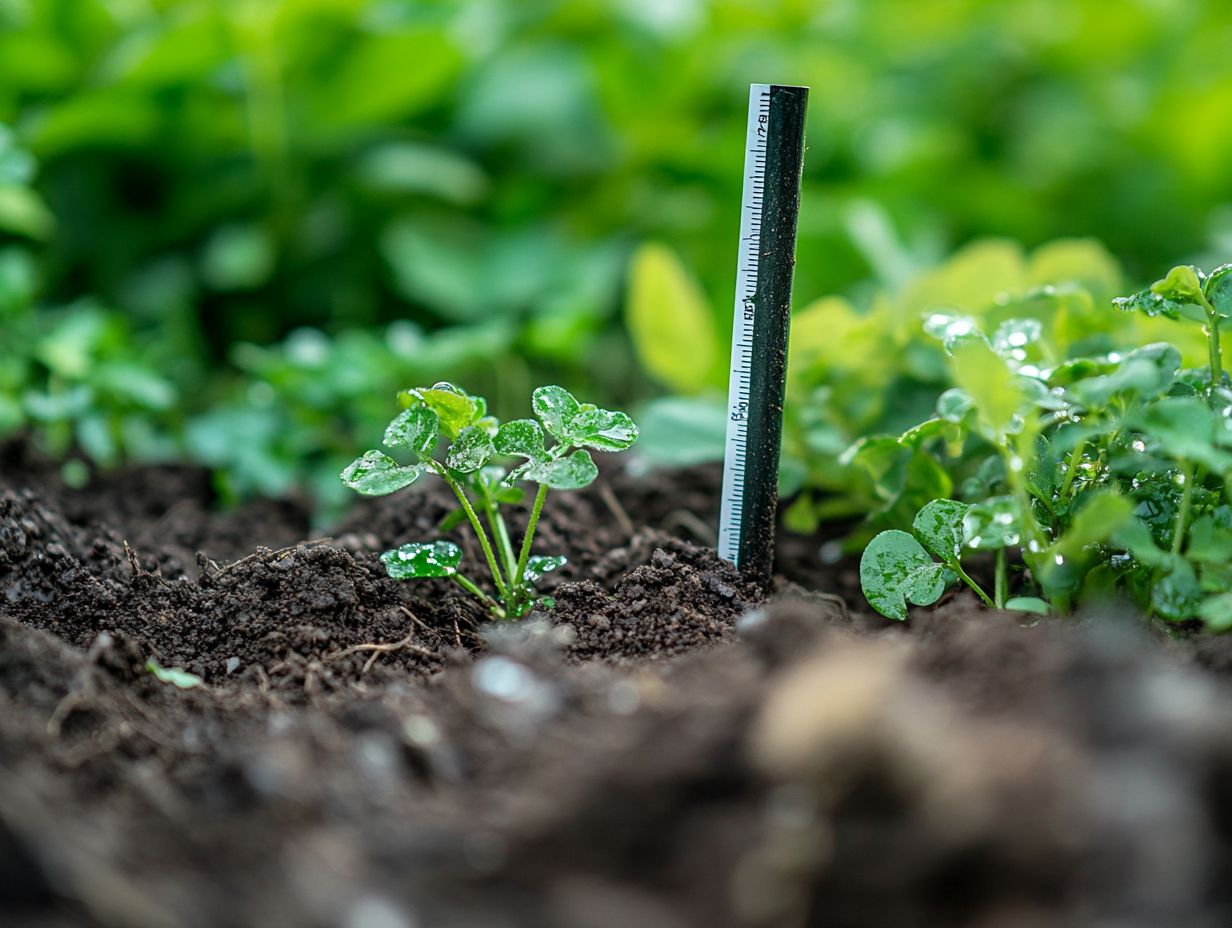
Measuring soil moisture accurately is essential for mastering effective irrigation management and maximizing agricultural production. You have a range of methods and tools available, including modern moisture sensors.
Gravimetric measurement gauges moisture content by weight. Meanwhile, volumetric water content assessments reveal the actual water present in the soil.
In today’s agriculture, modern moisture sensors and monitoring systems play a pivotal role. They allow for real-time evaluations and calibration methods that guarantee the precision and efficiency of your moisture data collection.
Methods and Tools
You have many tools to measure soil moisture. These include advanced methods like remote sensing and special moisture sensors such as tensiometers (which measure soil water tension) and Time Domain Reflectometry (a technique to measure soil moisture levels). Among the most effective tools for agricultural practices are tensiometers and Time Domain Reflectometry.
Platforms like EOSDA Crop Monitoring utilize satellite technology to offer comprehensive moisture maps and insights into soil moisture levels across expansive areas. This enhances your soil moisture monitoring abilities.
Grasping these moisture levels is essential for optimizing irrigation and maximizing crop yields. Moisture sensors that utilize capacitance technology provide real-time data, empowering you to make informed decisions based on current soil conditions, which are critical for effective crop management.
Remote sensing techniques, like satellite imagery, enable large-scale monitoring. They pinpoint variations in moisture content throughout different areas of a field. EOSDA Crop Monitoring combines in-field measurements with aerial surveys, providing you with a complete view of soil health. This equips you with the insights necessary to enhance your agricultural practices effectively, addressing both moisture availability and potential toxic substances in the soil.
Impact of Soil Moisture on Plant Growth
Soil moisture plays a crucial role in your plants growth by directly influencing water absorption and nutrient availability. Maintaining adequate moisture levels is essential for achieving optimal crop yields. After all, water stress can have detrimental effects on plant health and productivity, especially under harsh weather conditions.
The relationship between soil moisture and plant growth dynamics is intricate. Different moisture levels determine the viability of agricultural crops and their potential for sustained growth. This highlights the importance of soil moisture data in effective crop management. Grasping this connection will help you grow thriving plants!
Effects on Nutrient Availability
Soil moisture levels directly impact nutrient availability. Adequate moisture is essential for the dissolved nutrients to be effectively absorbed by plant roots, influencing how nutrients behave in the soil. When soil moisture is lacking, nutrient uptake is hindered, adversely affecting plant growth and overall health. This can lead to gravitational potential issues in moisture management.
The balance of moisture within the soil not only supports water absorption but also plays a critical role in facilitating the movement of essential nutrients through the soil profile to your plants. This ensures optimal field management.
When moisture content is just right, roots can efficiently absorb nitrogen, phosphorus, potassium, and other micronutrients, leading to vigorous plant development. This is crucial for maximizing agricultural production. On the flip side, dry conditions can result in nutrient leaching, depriving your plants of vital sustenance and negatively affecting overall crop conditions.
Too much moisture can create anaerobic conditions, complicating nutrient absorption, especially in soils with high soil salinity. Understanding the intricate relationship between soil moisture and how nutrients behave in soil is crucial for anyone looking to optimize agricultural yield and cultivate healthy plant ecosystems.
This knowledge not only boosts your crops but also strengthens the entire ecosystem around you. Start monitoring your soil moisture today to boost your crop yield!
Relationship to Plant Health and Yield
The connection between soil moisture and plant health is crucial for achieving optimal crop yield. Fluctuating moisture levels can lead to water stress, negatively impacting plant vitality and overall agricultural productivity.
Ensuring sufficient soil moisture is essential for healthy growth, as it allows plants to access the nutrients they need to thrive. Drought conditions and excessive water deficits can significantly reduce crop yield, highlighting the importance of effective moisture management in agricultural practices.
Understanding moisture content is vital. By implementing strategies like irrigation scheduling and soil moisture monitoring, you can dramatically reduce the impacts of water stress!
Prioritizing these techniques not only enhances the resilience of your crops but also improves overall water use efficiency. Understanding the specific moisture requirements of different plants enables you to adopt tailored approaches, promoting greater nutrient absorption and healthier yields.
Maintaining balanced soil moisture levels is paramount; it serves as a critical factor for sustainable agricultural success.
Managing Soil Moisture
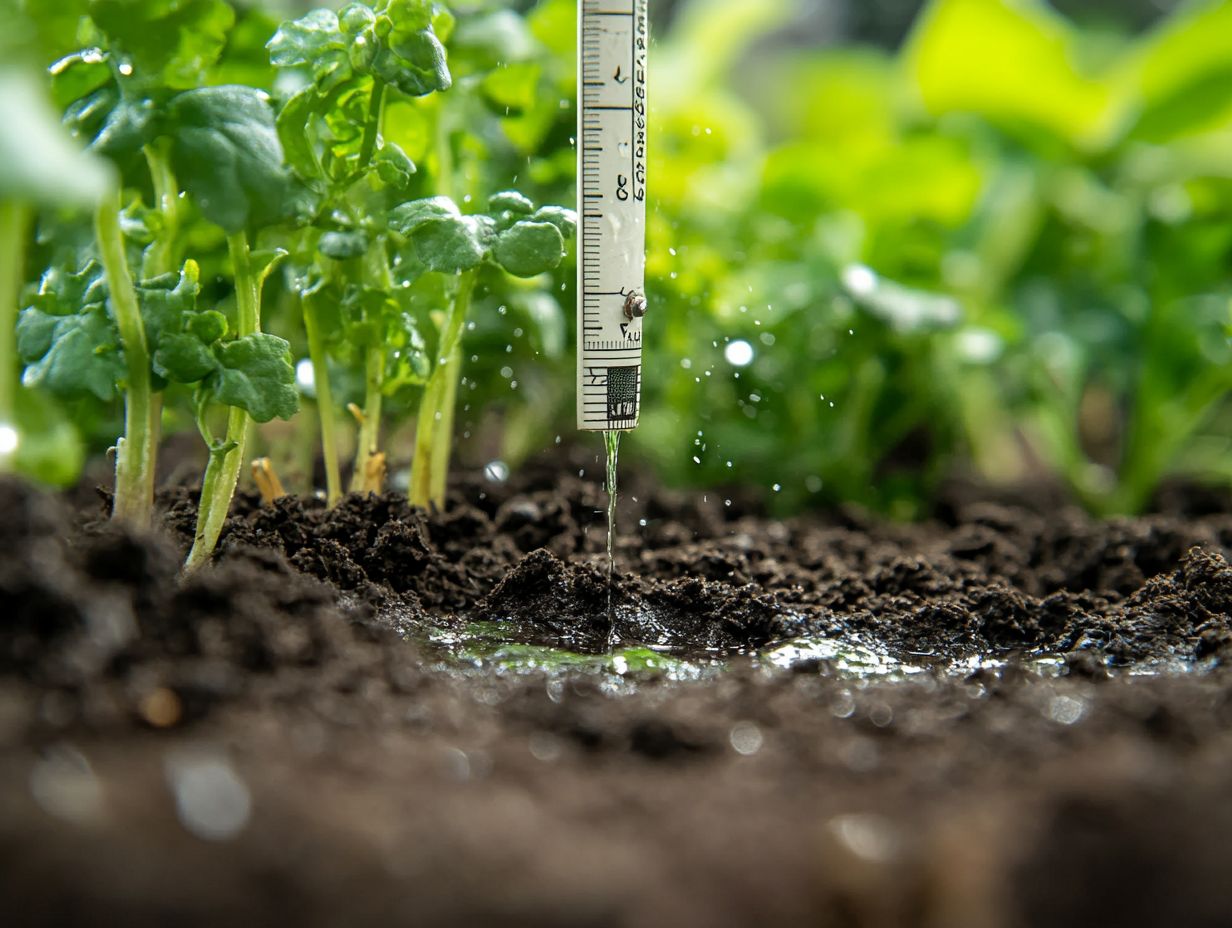
Managing soil moisture is crucial for optimizing your irrigation practices and ensuring that crops have the moisture they need. You can employ various strategies to maintain ideal moisture levels, which are essential for effective crop management.
These strategies maximize water retention and enhance understanding of soil characteristics. Incorporating techniques like cover cropping, mulching, and precision irrigation can significantly improve moisture levels necessary for sustainable agricultural production.
These practices contribute to better crop outcomes.
Strategies for Maintaining Optimal Levels
Utilizing moisture sensors is key to understanding soil water dynamics. To maintain optimal soil moisture levels, consider understanding soil moisture management and adopting effective irrigation strategies that ensure moisture availability for your various crop types.
Techniques like drip irrigation, which delivers water directly to plant roots, and rainwater harvesting can significantly enhance soil water retention. Practices such as mulching reduce evaporation and promote moisture conservation.
By understanding the unique moisture requirements of different crops, you can create tailored approaches to crop management that optimize water usage and boost productivity. Consider factors like water balance and water potential.
Use soil moisture sensors to gain real-time data, allowing for precise irrigation scheduling based on actual needs rather than guesswork. This technology helps mitigate overwatering and encourages deeper root growth, resulting in healthier plants and more effective soil moisture measurement.
Integrating cover crops into your farming system can improve soil structure and enhance its ability to retain moisture, thus contributing to optimal moisture levels. By employing these combined strategies, you not only maintain optimal moisture levels but also build resilience against drought conditions, ultimately contributing to sustainable agricultural practices.
Future of Soil Moisture Research
The future of soil moisture research presents exciting advancements and potential applications that could transform agricultural practices. Understanding soil salinity, or the amount of salt in the soil, will also play a crucial role.
By integrating satellite technology with advanced soil moisture monitoring systems, you can gain unparalleled insights into the moisture conditions throughout your fields. Innovations like EOSDA Crop Monitoring harness satellite data to create intricate moisture maps.
This empowers you to implement precision agriculture that maximizes water usage and enhances overall productivity in your farming endeavors.
Advancements and Potential Applications
Recent advancements in soil moisture monitoring technology, particularly through satellite capabilities, are revolutionizing agricultural practices. Tools like EOSDA Crop Monitoring empower you with in-depth insights into soil moisture levels.
This knowledge helps you make informed decisions about irrigation and crop management, including moisture analysis.
These innovations also improve drought forecasting and optimize water usage. Ultimately, they enhance both agricultural resilience and productivity. Using weather conditions can provide further context for decision-making.
By leveraging satellite imagery and sophisticated algorithms, you can easily access real-time data that accurately reflects the moisture content in your fields. This not only supports timely irrigation but also assists you in planning crop rotations based on specific soil conditions and soil texture.
As climate change continues to alter weather patterns, using technology for soil analysis becomes increasingly essential. You can integrate this data with other agricultural tools, fostering a holistic approach that promotes sustainable farming practices while maximizing your yield potential, including understanding soil density and organic matter.
The future of agriculture is changing fast! These technological advancements are paving the way for smarter resource management, benefiting both your land and your efforts as a farmer, along with agricultural processing that enhances overall efficiency.
Frequently Asked Questions
What is soil moisture and why is it important?
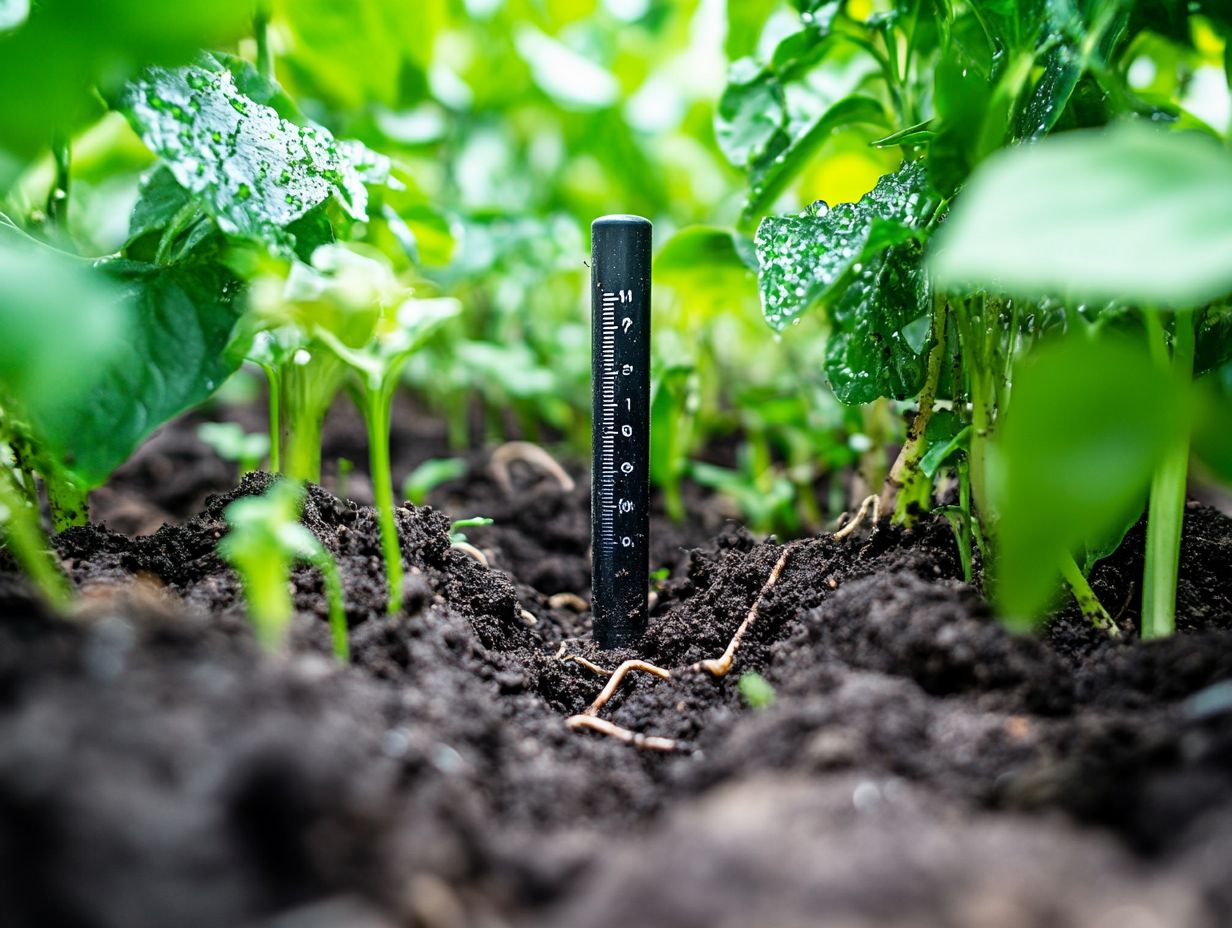
Soil moisture refers to the amount of water held in the spaces between soil particles. It is important because it affects plant growth, water availability for animals and humans, and the overall health of ecosystems.
What factors influence soil moisture?
Soil moisture is influenced by several factors, including climate, soil type, soil texture, topography, vegetation cover, and land use. These factors impact the amount of water, including water stress, that enters and exits the soil, as well as the rate of evaporation from the soil surface.
How does soil moisture impact plant growth?
Plants require water for photosynthesis, the process by which they convert sunlight into energy. Soil moisture affects how much water is available to plants, which in turn impacts their growth, development, and overall health, influencing their water absorption.
Can soil moisture be measured?
Yes, soil moisture can be measured using various methods, including soil moisture sensors, gravimetric measurements, and remote sensing techniques. These measurements provide valuable data for understanding soil moisture dynamics and making informed land management decisions.
How does soil moisture impact water availability for animals and humans?
Soil moisture plays a crucial role in the hydrologic cycle, which is the continuous movement of water on, above, and below the surface of the Earth. It helps replenish groundwater and surface water sources, which are important for providing water for drinking, irrigation, and other human and animal needs while also affecting the water tension.
What are the consequences of too much or too little soil moisture?
Both too much and too little soil moisture can have negative consequences. Excess soil moisture can lead to waterlogging and soil erosion, while insufficient soil moisture can cause drought and reduced crop yields. Maintaining optimal soil moisture levels and understanding moisture availability is important for sustainable land management and agricultural practices.
Explore more about soil moisture technology and its applications in farming!


